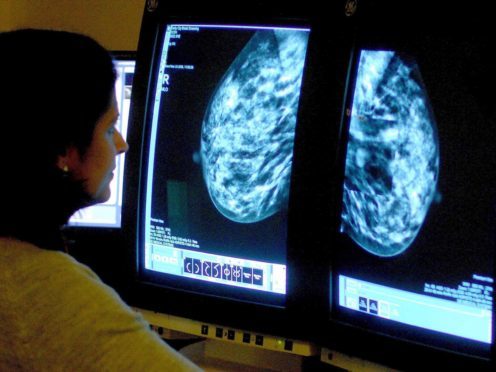Women with high levels of a hormone that can be detected through a simple blood test may have a higher risk of breast cancer, a new study suggests.
Those who have elevated levels of anti-Mullerian hormone (AMH) – which indicates the size of a woman’s ovarian reserve – are 60% more likely to develop breast cancer compared to women with low levels of the hormone.
Tests for the hormone are already incorporated in fertility tests.
Charity Breast Cancer Now, which helped fund the research, said steps could now be taken to discover whether adding the test to current prediction tools may help identify women at risk of the disease.
Researchers from New York University (NYU) School of Medicine examined blood samples from almost 6,000 premenopausal women across the US and Europe.
They analysed data from 10 studies – including the Breast Cancer Now Generations Study at The Institute of Cancer Research, London – to examine the association of AMH levels with breast cancer risk.
They found that those with the highest levels of the hormone were more likely to develop breast cancer.
Publishing their finding in the International Journal of Cancer, the authors said the hormone is a “possible biomarker” for breast cancer.
Study lead author Professor Anne Zeleniuch-Jacquotte, from NYU School of Medicine, said: “The link we found between anti-Mullerian hormone and breast cancer risk is interesting because few markers of risk in the blood have been identified for premenopausal women.
“Our study found a moderate risk increase and we hope additional markers can now be found to help substantially improve individual risk prediction.”
Co-author Anthony Swerdlow, professor of epidemiology at The Institute of Cancer Research, London, who leads the Breast Cancer Now Generations Study, added: “In future, anti-Mullerian hormone could be factored into new ways of predicting individual women’s risk of developing the disease.
“The causes of breast cancer are highly complex and not yet fully understood. Pooling together large datasets is key to understanding how the many different causes interact and affect breast cancer risk.”
Baroness Delyth Morgan, chief executive at Breast Cancer Now, said: “The discovery that high levels of anti-Mullerian hormone in the blood could indicate women at an increased risk of breast cancer is really promising.
“We now need to understand whether adding this blood test to current prediction tools could help give women a clearer picture of their risk and identify those who could benefit from more frequent screening or preventive measures, such as tamoxifen.”
